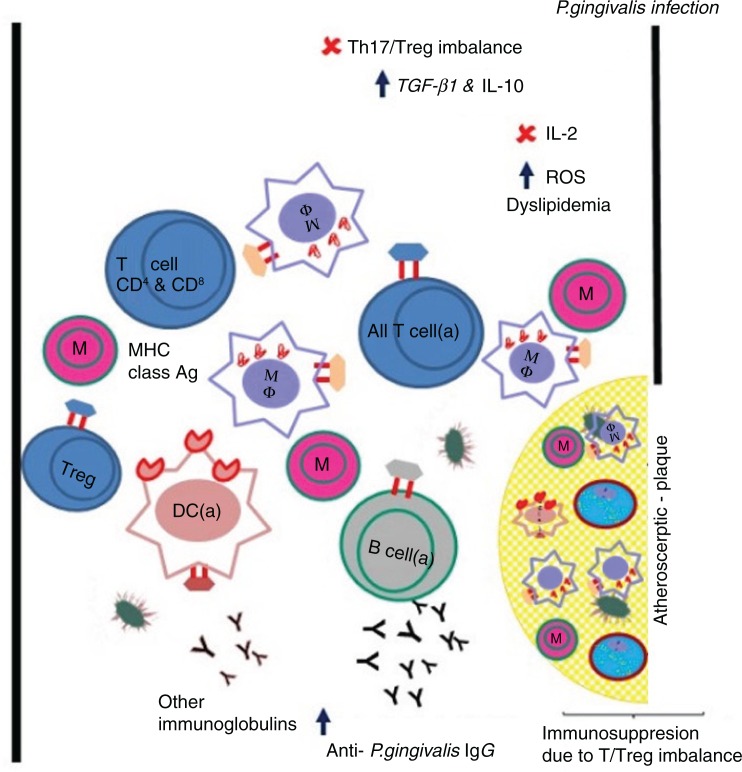Fig. 2.
P. gingivalis and its presumed contribution to atherosclerosis via adaptive immune suppression. The schematic shows an open blood vessel (black lines) with atherosclerotic plaque. Both the blood vessel and the atherosclerotic plaque contain classical immune cells (naïve and activated) with or without MHC class molecules and immunoglobulins (Y) in peripheral blood, and foam cells restricted to the atherosclerotic plaque. Cytokines in health are in balance for all immune cells. M, monocyte (naïve), MF, macrophage (activated), T cell (naïve), T cell (a) activated, DC (a) dendritic cells, B cell (a) activated, Y functional antibodies (pink border with black), non-functional antibodies (black). Increase in the serum P. gingivalis IgG confirms the involvement of adaptive/humoral immune responses of the host.

